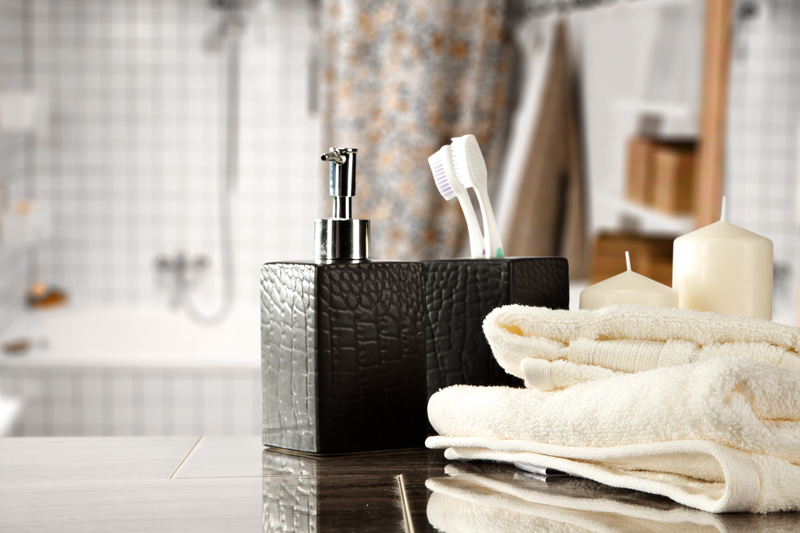Spotlight on Safety: Professional Techniques in Piano Relocation
Posted on 21/06/2025
Spotlight on Safety: Professional Techniques in Piano Relocation
Relocating a piano is a task that demands much more than strength and perseverance. Whether it's a delicate baby grand or a vintage upright, pianos are intricate, sizeable, and valuable instruments that require dedicated expertise to move safely. This comprehensive guide spotlights the safety measures and professional techniques used in piano relocation, addressing the unique challenges, preparation methods, and specialist practices that ensure your cherished instrument arrives at its new home in pristine condition.

Why Piano Relocation Demands Specialized Care
Pianos are not ordinary pieces of furniture. Weighing anywhere from 300 to over 1,200 pounds, with complex internal mechanisms and sensitive materials, piano moving is a specialized process. Their size, weight distribution, and fragility pose unique risks. Without proper planning and technique, attempts at moving a piano can result in damage to the instrument, property, or injury to those involved.
- Weight and Fragility: Pianos combine heavy frames with delicate parts, such as hammers, strings, and soundboards.
- Irregular Shape: Their balance points and awkward center of gravity make handling difficult.
- Surface Protection: The high-gloss finish of many pianos is easy to scratch or mar during relocation.
Potential Risks of Inadequate Piano Moving
Understanding the dangers associated with improper piano relocation techniques is crucial:
- Physical Injury: Lifting or maneuvering a piano incorrectly can result in back injuries, pinched fingers, or worse.
- Instrument Damage: Misalignment, cracked soundboards, or broken legs are common outcomes of mishandling.
- Property Damage: Floors, walls, and doorways can sustain scrapes and dents.
Professional Piano Relocation: Safety-First Approach
A successful piano move revolves around a well-orchestrated plan and the application of professional techniques. Here's how piano movers prioritize safety at every stage:
1. Comprehensive Assessment and Planning
Expert piano movers start with a detailed evaluation. They examine the type of piano (upright, grand, baby grand, spinet), assess the path for obstacles (stairs, tight corners), and analyze the weight and dimensions. This preparation minimizes unforeseen challenges.
- Route Mapping: Identifying the safest, most efficient path through your home or venue.
- Measuring Doorways and Hallways: Ensuring the piano fits without forcing or scraping.
- Weather Considerations: Scheduling the move to avoid rain, snow, or excessive humidity, all of which threaten both safety and the piano's finish.
2. Utilization of Specialized Equipment
The right tools make all the difference in safe piano relocation. Professionals utilize industry-grade equipment including:
- Piano Dollies: Heavy-duty, wheeled platforms that accommodate both upright and grand pianos.
- Straps and Harnesses: Used for secure lifting and stabilizing the instrument, especially on stairs or in elevators.
- Piano Boards (Skid Boards): Essential for grand pianos, allowing movers to carefully tilt and support the instrument as needed.
- Padded Blankets: Soft yet resilient to prevent scratches or dings during the move.
3. Disassembly for Safe Handling
Command of piano structure is fundamental. For grand pianos, safe relocation typically means removing legs, pedals, and lyres. This lowers the risk of stress fractures or joint damage. Movers also wrap and label all parts for reassembly.
- Keyboard Lid: Secured with proper locking mechanisms to avoid accidental opening or key damage.
- Piano Legs and Pedals: Removed and wrapped individually to prevent loss or breakage.
- Music Stands: Detached if possible to safeguard from snapping or splintering.
4. Teamwork and Communication
Safe piano moving is never a solo effort. Professionals work in coordinated teams, communicating clearly throughout the process to prevent missteps during heavy lifting, turning, or navigating stairs. Each person is assigned a specific position for optimal balance and control.
- Lead Mover: Sets the pace, manages navigation and signals changes in movement.
- Rear and Side Support: Stabilize the piano and help balance the load.
5. Protective Measures for Environment and Instrument
Protective padding and surface covers are employed to shield floors and door frames. Moving blankets and thick foam wraps encase the piano body, providing a cushion against nicks and impacts. When stairs or uneven terrain are encountered, movers utilize additional safety rails or ramps to maintain stability.
- Corner Protectors: Prevent wall and instrument damage in tight corridors.
- Rug Sliders: Allow for easier, safer movement over carpets.
6. Vehicle Loading and Transit Protocols
Once the piano is safely at the vehicle, professional movers employ specific loading procedures:
- Piano Positioning: Upright pianos are kept in an upright position; grand pianos are placed on their side on the piano board.
- Securing with Straps: Heavy-duty straps affix the piano securely to the wall of the vehicle, preventing sliding or toppling in transit.
- Climate-Controlled Transport: Where possible, climate control is used to maintain optimal humidity and temperature conditions, reducing the risk of warping or finish cracks.
7. Unloading and Reassembly
At the destination, the unloading process is executed with equal care. Pianos are reassembled by expert hands, all components double-checked for secure fit. If needed, professional piano tuners are scheduled to restore the instrument's tonal perfection after transit.
Choosing a Professional Piano Relocation Service
Even the sturdiest individuals can benefit from opting for professional piano relocation experts. When hiring a service, seek the following qualities:
- Experience and Reputation: Look for companies with proven track records and positive client testimonials.
- Licensing and Insurance: Choose movers who carry proper liability and cargo insurance for peace of mind.
- Specialized Training: Ensure that movers are trained specifically in piano safety and moving techniques--not just general household moving.
- Transparent Pricing: Request an itemized quote that covers all aspects of piano relocation, from disassembly to final placement and tuning coordination.
DIY Piano Moving: Cautions and Considerations
While some piano owners consider a do-it-yourself piano move to save on costs, it is important to recognize when a task exceeds household capabilities. Successful, safe piano relocation is as much about knowledge and preparation as it is about physical effort.
- Lack of Equipment: Most homes do not have the specialized dollies, skid boards, or heavy-duty blankets required.
- Risk of Injury: The weight and awkwardness of a piano make it a hazardous object for amateurs to handle.
- Potential for Costly Mistakes: Any mishap could cost more than professional moving services, considering repairs or replacements.
If you do choose to attempt a move, follow essential safety tips for piano moving:
- Always have at least 3-4 strong adults to help.
- Use thick gloves to prevent smashed fingers.
- Lift from the base, not by the legs or delicate parts.
- Don't rush--patience prevents accidents.
- Keep children and pets out of the moving path.
Piano Relocation and Long-Term Instrument Care
Piano relocation safety doesn't stop when the instrument reaches its new spot. Keep your instrument in peak condition by considering these aftercare practices:
- Acclimate Gradually: Allow the piano time to adjust to the new room's temperature and humidity before tuning or playing intensively.
- Tuning: Schedule professional tuning 2-6 weeks after moving, as even a gentle move may cause pitch shifts.
- Check for Damage: Inspect for any unnoticed cracks, scratches, or warping.
- Monitor Environmental Factors: Maintain stable humidity and avoid direct sunlight or proximity to heating vents.
The Importance of Regular Maintenance Post-Relocation
Piano safety doesn't end with successful moving. It's vital to establish a routine maintenance schedule after any relocation to protect tuning, mechanics, and finish.
- Professional Inspections: Engage technicians for annual check-ups, especially after a major move.
- Cleaning: Gently clean the keys and surfaces with appropriate materials, never with harsh chemicals.
- Tuning and Regulation: Regular tuning keeps your piano sounding its best and prolongs its life.

Frequently Asked Questions: Safe Piano Moving Techniques
- How much does it typically cost to relocate a piano?
Prices may vary from $150 for a local upright move to over $1,000 for grand pianos or long distances. Factors influencing cost include piano size, staircase navigation, and required equipment. - Is it ever safe to move a piano by myself?
Small spinets or console pianos may be manageable with several strong helpers, but uprights and grands are best left to professionals to avoid damage and injury. - Does moving a piano affect its tuning?
Most moves will cause the piano to go slightly out of tune, due to both vibration and environmental changes. Always allow a settling period before bringing in a tuner. - Can you move a grand piano without dismantling it?
No--proper technique requires removing the legs, music rack, and pedal lyre for safety and balance.
Piano Relocation Safety: Key Takeaways
- Never underestimate the complexity of piano relocation.
- Professional movers use a combination of assessment, special equipment, teamwork, and strategic disassembly to ensure safe piano moves.
- Protecting both instrument and property is a top priority through careful padding and route planning.
- Piano care continues after delivery--regular tuning and inspections are vital for longevity.
If your instrument is precious to you, investing in professional piano relocation services is the surest way to enjoy years of beautiful music in your new space. Not only do expert movers guarantee a higher standard of safety, but they also provide peace of mind--removing the stress and risks associated with such a towering task.
In conclusion, the spotlight on safety reveals one simple truth: the professional techniques used in piano moving are indispensable for protecting the value, beauty, and function of your instrument. Trust your piano's journey to seasoned hands, and let the music play on uninterrupted.






